London’s ambitious journey to a greener future: The history of the Ultra Low Emission Zone
- Like
- Digg
- Del
- Tumblr
- VKontakte
- Buffer
- Love This
- Odnoklassniki
- Meneame
- Blogger
- Amazon
- Yahoo Mail
- Gmail
- AOL
- Newsvine
- HackerNews
- Evernote
- MySpace
- Mail.ru
- Viadeo
- Line
- Comments
- Yummly
- SMS
- Viber
- Telegram
- Subscribe
- Skype
- Facebook Messenger
- Kakao
- LiveJournal
- Yammer
- Edgar
- Fintel
- Mix
- Instapaper
- Copy Link
Posted: 2 November 2023 | Leah Hockley - Intelligent Transport | No comments yet
Two months on from the London-wide expansion of the Ultra Low Emission Zone, Intelligent Transport’s Leah Hockley journeys through the history of the ULEZ and considers the progress that has been made since its launch in 2019.
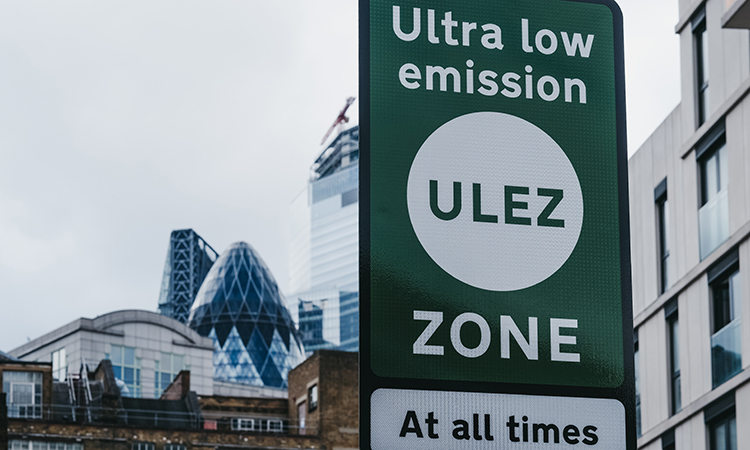

On 8 April 2019, just under three years after first becoming Mayor of London, Sadiq Khan introduced the first area of the Ultra Low Emission Zone (ULEZ). Though plans were originally announced by Boris Johnson in 2015 during his time in City Hall as Mayor, with the initial intention that it would come into operation in September 2020, Khan was ultimately the one to actually deliver the ULEZ, over a year early, and has been the one to champion its results and further expansion ever since.
The initial Ultra Low Emission Zone covered the same areas as the Central London Congestion Charge – which, according to the RAC, covers approximately the area from Kings Cross in the north to Vauxhall in the south, and Paddington in the west to Whitechapel in the east. This meant that, initially, drivers coming in and out of central London would have been required to pay £17.50 (£5 for the Congestion Charge and £12.50 for the ULEZ charge) if they were driving a non-compliant vehicle; following a price increase for the Congestion Charge, drivers are now required to pay £27.50 (£15 for the Congestion Charge and £12.50 for the ULEZ charge) if driving within the congestion zone and using a non-ULEZ-compliant vehicle.
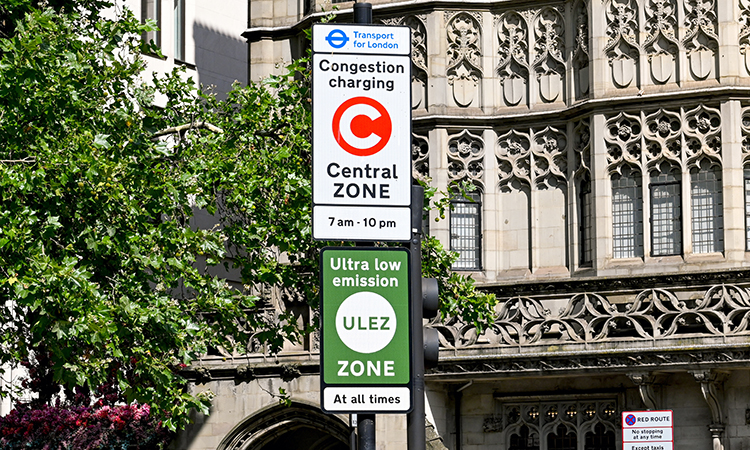

An inner London expansion
Khan has been vocal about the reported success of the Ultra Low Emission Zone, and has been an equally vocal advocate for its further expansion. And, as a result of the initial zone’s reported success, on 25 October 2021, the first expansion of the ULEZ was implemented, increasing the size of the chargeable zone from just central London up to, but not including, the North Circular (A406) and South Circular (A205) Roads.
The new zone was 18 times the size of the original central London zone and covered 3.8 million people. Measuring a total of 380km2, it covered one quarter of London and was the largest zone of its kind in Europe. “The expanded Ultra Low Emission Zone is the most ambitious scheme of its kind in the world,” said Nick Bowes, Chief Executive at Centre for London, at the time.
Many Londoners took action to prepare ahead of the initial ULEZ expansion. Early indications showed that 87% of vehicles travelling in the zone already met the ULEZ standards, which was a significant increase in compliance compared to 39% in February 2017, when changes associated with the ULEZ first began.
However, on 18 January 2022, analysis released in a report commissioned by the Mayor of London showed that more action would be required by City Hall, particularly around reducing vehicle use in London, and set out the scale of the action required to move London towards a greener future and net zero carbon emissions by 2030. Khan called the report a stark wake-up call for the UK government on the need to provide much greater support to help London to reach net zero by 2030 and to help the UK to reach its national target, which was announced before COP26.
As a result, the Mayor announced at the time that he was considering a number of policies to encourage Londoners and those who drive within London to shift from polluting cars to electric vehicles, public transport and sustainable active travel, such as walking and cycling.
The potential approaches that were under consideration were:
- Expanding the Ultra Low Emission Zone (ULEZ) even further, extending the current zone beyond the north and south circular roads to cover the whole of Greater London, using the current charge level and emissions standards
- Modifying the ULEZ to make it even more impactful in reducing emissions, by building on the existing scheme and extending it to cover the whole of Greater London and adding a small clean air charge for all but the cleanest vehicles
- A small clean air charge – a low-level daily charge across all of Greater London for all but the cleanest vehicles to encourage different travel behaviours and reduce the number of short journeys by car
- Introducing a Greater London boundary charge, which would charge a small fee to non-London registered vehicles entering Greater London, responding to the increase in cars from outside of London travelling into the city seen in recent years.
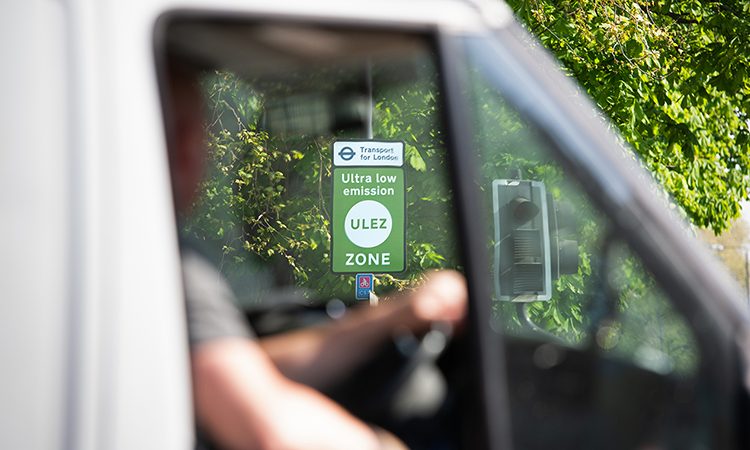

Credit: Transport for London
Initial results
Six months on from the first expansion of the ULEZ, a report from City Hall assessed the impact that the expanded zone had had, finding that the number of older, more polluting vehicles driving in central and inner London and the levels of harmful pollution Londoners are exposed to had both fallen substantially.
The report showed that 94% of vehicles seen driving in the zone were meeting the strict ULEZ standards on an average day, which had increased from 87% in the weeks before the zone expanded and from 39% in February 2017, when changes associated with the ULEZ first began. There were also 67,000 fewer non-compliant vehicles in the zone on an average day compared to the period right before the ULEZ expanded, which signified a fall of 54%.
These factors combined meant that NO2 concentrations in inner London were estimated to be 20% lower than they would have been without the ULEZ and its expansion. In central London, NO2 concentrations were estimated to be 44% lower. The benefits were also reportedly being felt beyond the zone, with all monitoring sites on the boundary of the expanded zone having also seen reductions in NO2 concentrations.
Expanding to outer London
Though Khan’s original statement on 18 January 2022 outlined that, subject to consultation and feasibility, any scheme that was chosen from the potential approaches that were under consideration would be implemented by May 2024, it wasn’t long before a fresh set of plans were announced to further build upon the reported success of the Ultra Low Emission Zone.
In March 2022, Khan announced that he had asked Transport for London (TfL) to consult on expanding the Ultra Low Emission Zone (ULEZ) London-wide in 2023, whilst ruling out the Clean Air Charge and the Greater London Boundary Charge.
Within the statement, it was noted that, in weighing up the different proposals, the rising cost-of-living had been a key consideration, and this meant that a scheme would need to be chosen that would have the biggest effect on reducing emissions and congestion relative to the potential financial impact on Londoners as a whole. Reportedly, after examining the science, studying the data and carefully considering the wider economic context, the Mayor decided that his preferred option was to extend the Ultra Low Emission Zone London-wide to the London Low Emission Zone (LEZ) boundary in 2023, subject to public and stakeholder consultation. He ruled out both the Clean Air Charge and the Greater London Boundary Charge as options.
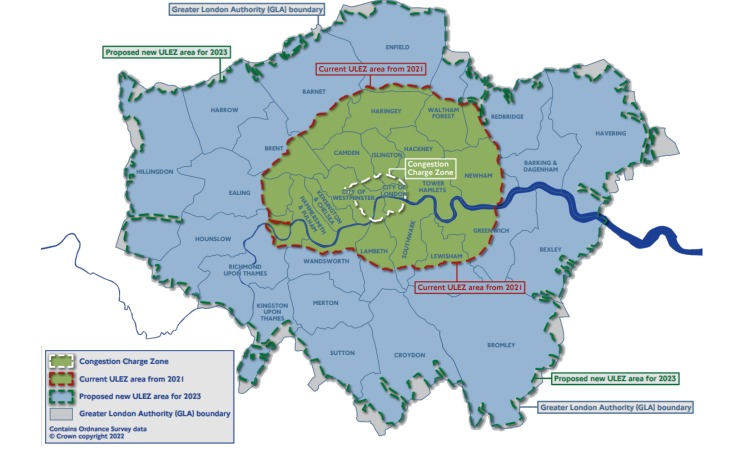

Credit: Transport for London – A map displaying the Congestion Charge zone, current ULEZ area and proposed new ULEZ area.
On 25 November 2022, after eight months of consultation and review, an announcement from the Mayor of London confirmed that the Ultra Low Emission Zone would be expanded London-wide – operating across all London boroughs and up to the existing Low Emission Zone boundary – in order to help to tackle the triple threats of air pollution, the climate emergency and congestion.
The announcement followed a public consultation that ran between May and July 2022, in which 59% of respondents agreed that more needed to be done to tackle toxic air. A representative YouGov poll commissioned by City Hall also revealed that nearly twice as many Londoners believed that the Mayor’s proposed expansion of the ULEZ should go ahead than oppose it.
The current state of affairs
29 August 2023 marked the expansion of the Ultra Low Emission Zone London-wide in a landmark moment for the city. The new zone now covers every London borough – it is expected to bring cleaner air to five million more people and reduce carbon emissions in outer London by a further 27,000 tonnes.
Within the official statement regarding the London-wide expansion, the Mayor said that the decision to expand the ULEZ was a difficult one, but necessary to save lives, protect the health of Londoners and tackle the climate crisis. Citing toxic air leading to children growing up with stunted lungs, an increased risk of asthma, cancer and dementia, and causing around 4,000 premature deaths every year in London, the Mayor vowed again to continue being ‘a doer, not a delayer’ when it comes to reducing air pollution and taking bold climate action.
Khan has said that the ULEZ is the centrepiece of a range of measures that he is implementing to tackle London’s toxic air, including putting a record number of zero-emission buses on the road and making London’s electric vehicle charging network the largest of any city in Europe. Whilst these measures are making a real difference, Khan has said that all of the evidence shows that clean air zones like the ULEZ are the most effective tool available to quickly and meaningfully cut air pollution in a city like London, having already reduced air pollution in central London by almost 50% and in inner London by a fifth.
Regarding the expansion, Khan said: “This is a landmark day for our city which will lead to a greener, healthier London for everyone. The decision to expand the ULEZ London-wide was a difficult one, but necessary to save lives, protect children’s lungs and help to prevent asthma, dementia and other health issues.
“All of the evidence shows that it’s clean air zones like ULEZ that are the gamechanger in a city like London when it comes to cutting toxic air quickly and meaningfully to protect people’s health. It’s thanks to the ULEZ that we are now set to get London’s air to within legal limits in the next couple of years, 184 years earlier than previously projected.”
Supporting Londoners affected by the ULEZ expansion
Having listened to the concerns of Londoners regarding the impact of the ULEZ expansion, the Mayor and TfL significantly expanded the existing scrappage scheme so that every single Londoner affected by the ULEZ is able to access thousands of pounds of support, in addition to the scrappage value of their old polluting vehicle. The total amount that the Mayor has invested in the scrappage scheme for the ULEZ expansion is £160 million, signifying the most generous scrappage scheme ever seen in the UK.
As a result of the scrappage scheme updates, all Londoners with non-compliant cars are eligible for £2,000 for scrapping a car or £1,000 for scrapping a motorcycle. Similarly, small businesses and charities can now receive increased grant payments of between £6,000 and £11,500, and eligible charities, businesses and sole traders can now apply for up to three vans or minibuses to be scrapped or retrofitted in total.
In addition, the payment for wheelchair accessible vehicles has increased from £5,000 to £10,000, with grants of £6,000 available to retrofit a van to ULEZ standards. A number of mitigations have also been made for different groups, including exemptions for disabled people and wheelchair accessible vehicles until October 2027 – and new six-month grace periods also recognise that small businesses and charities are doing the right thing and adapting to the ULEZ but may face a delay with receiving their new vehicle or retrofit appointment.
Since opening the scrappage scheme up to all Londoners as a result of the ULEZ expansion, there has been a significant spike in the number of people applying for support. Data shared on 29 August 2023 outlined that there had been a 111% increase in traffic to the scrappage website since 21 August 2023.
On the topic of the scrappage scheme expansion, Khan said: “As Mayor, I’ve continued to listen to the concerns of Londoners, which is why we have massively expanded the scrappage scheme. This means that all Londoners with non ULEZ-compliant cars can now get financial support to switch to greener, less polluting alternatives. We still have millions of pounds left in the scrappage scheme pot, so I encourage all Londoners who are impacted by ULEZ to apply today for the support that we’ve made available. I continue to call on the government to give London and Home Counties money for scrappage, as they have other cities around the UK.”
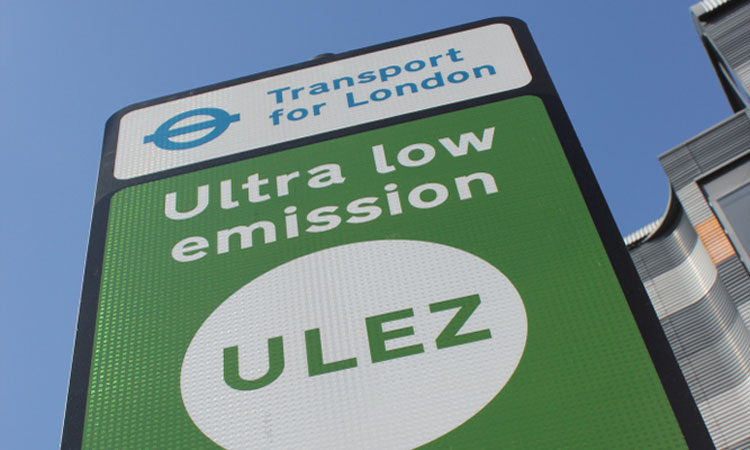

Two months on
With the London-wide ULEZ coverage having been live for just over two months at the time of writing, initial data is now being released outlining the early success of the expansion.
A new report, released on 31 October 2023, has shown that the Ultra Low Emission Zone expansion has been highly effective at reducing the number of older, more polluting vehicles seen driving in London since it expanded to cover every borough of the city on 29 August 2023.
Its key findings reveal:
- Across both inner and outer London, 95% of vehicles overall seen driving in London on an average day now comply with the ULEZ emissions standards, up from 39% compliance London-wide in February 2017 when the Mayor confirmed the introduction of the Toxicity Charge (T-Charge) as a stepping stone towards the ULEZ
- The number of older, more polluting non-compliant vehicles seen driving in London on an average day has decreased by 77,000 compared to June 2023 – signifying a reduction of 45%
- In outer London, there has been a 10 percentage point increase in compliance since the launch of the consultation to expand the ULEZ across all London boroughs. According to data, 85% of vehicles seen driving in outer London on an average day were compliant at the start of the consultation in May 2022, and compliance has now increased to 95%
- Outer London vehicle compliance jumped notably once the scheme was officially expanded on 29 August 2023. In June 2023, compliance across all vehicles seen driving in outer London was at 90.9%. The effect of the ULEZ expansion led to a four percentage point jump in compliance, to 95.2% in September 2023
- Compliance rates across all vehicle types in outer London have nearly caught up with inner London. In outer London, 96.4% of cars seen driving are now compliant, compared to 96.9% of cars seen driving in inner London. Car compliance in outer London has increased from 90% in November 2022, when the Mayor announced the decision to expand the ULEZ London-wide, and 44% in 2017.
Khan said: “I’ve always said that the decision to expand the ULEZ was very difficult, but a month on from the expansion, we can already see that it is working. London is now home to the world’s largest clean air zone and this new data shows 95% of vehicles seen driving in London on an average day now comply with our air quality standards – a 10 percentage point increase since I began to consult on the ULEZ expansion in May 2022. This will make a huge difference to the lives and health of Londoners.
“More than 19 in 20 vehicles on London’s roads are now compliant and do not need to pay the daily ULEZ charge. For the remaining Londoners still driving non-compliant vehicles, millions of pounds of scrappage scheme support is still available. Take-up has been incredible, with 37,256 grants approved for Londoners to date for the outer London expansion alone, and I encourage anyone affected by the ULEZ to apply today for support.
“This data is a testament to the huge progress we’ve made in tackling toxic air pollution since I was first elected in 2016. Londoners are experiencing a greener, cleaner, and healthier city. I am determined to do all I can to ensure that Londoners now and the next generation can grow up breathing cleaner air, wherever they live in the capital.”
Related topics
Active travel, Air Quality, Alternative Power, Infrastructure & Urban Planning, Modal shift, Public Transport, Sustainable Urban Transport, Traffic Management, Transport Governance & Policy
Related cities
London
Related countries
United Kingdom
Related organisations
Centre for London, Transport for London (TfL), UK Government
Related people
Nick Bowes, Sadiq Khan








